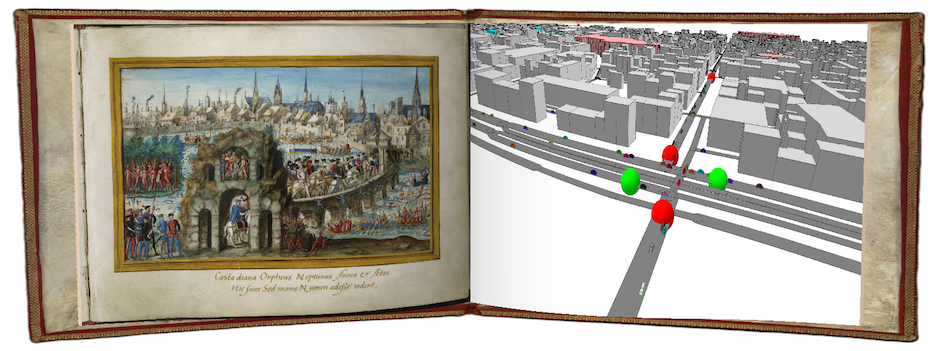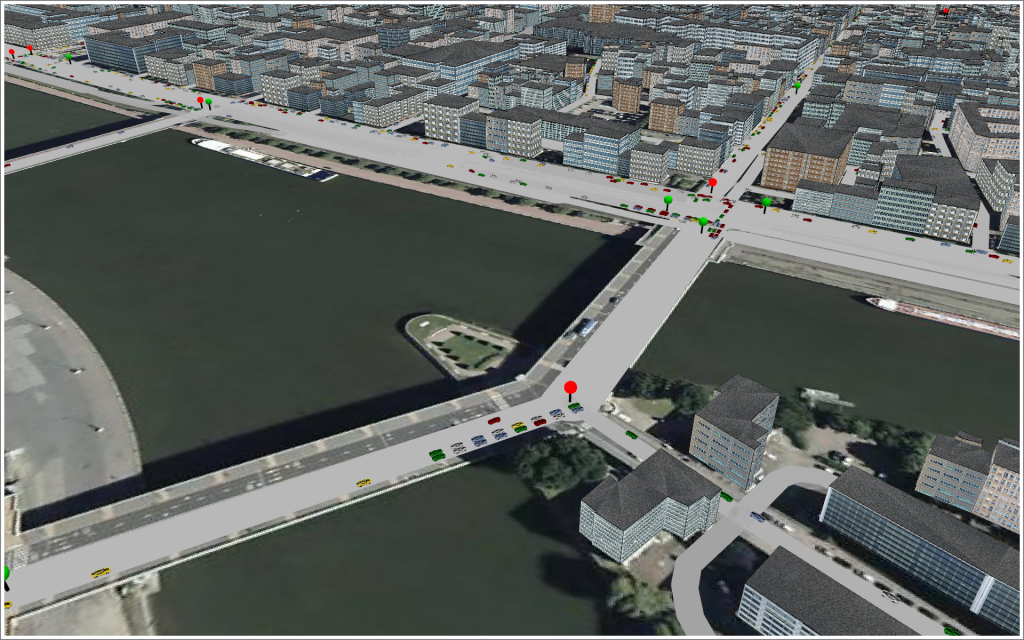Nowadays, traffic simulations are often used by urban planners to make decisions concerning road infrastructures. The increase of use of traffic simulation was allowed by the development of many frameworks allowing urban planners to easily build their own scenarios (MATSIM, SUMO…). However, if these frameworks are often well-adapted to traffic in normal condition, very few tools allow the handling of uncommon events such as natural or technological hazards. Actually, In this context, being able to simulate the traffic in a realistic way while taking into account the road infrastructure (crossing, traffic signals…), the properties of the cars (length, max speed…) and the personality of the drivers (tendency to respect the norms) is mandatory.
We propose an agent-based model based on this work called MOSAIIC. This model manages road infrastructures and traffic signals, input from real geographical data, as well as a detailed implementation of cars and drivers: choice of destination, acceleration and slowing down according to the traffic and the regulation, lanes changing, crossroads crossing etc. In addition, it integrates different profiles of drivers concerning their behavior in risk situations: stay pragmatic, try to flee, follow the other drivers, leave his/her car…
The model was implemented with the GAMA modeling and simulation open-source platform and more particularly with its traffic plug-in. The advantage of using a generic platform such as GAMA is to make it easily tunable even by people that are not computer scientists. Indeed, GAMA provides a complete simple modeling language and integrated development environment. We are a team comprised of computer scientists and geographers, and we interact regularly with traffic managing institutions: GAMA’s MOSAIIC is both a sophisticated computer model and simulation, and based on real world data and needs, in all their complexity.
We illustrate the use of our model for a case-study concerning the simulation of the traffic of the city of Rouen (France, Normandie). This metropole of over 500 000 inhabitants is built on the two sides of the Seine River. Six bridges allow to cross the river. This city is particularly exposed to technological hazards as many industrial buildings – that can be potentialy dangerous – are located near the city center.
The simulations carried out from realistic data (OSM data, origin-destination matrices based on interviews…) let us model the traffic in daily situations. We then built behavior profiles for our drivers based on the literature on crisis situation (civilian and military). The hazard is afterwards injected as a disturbance of this daily traffic, and the tactical behavior of our drivers in time of crisis let us work on different scenarios of this hazard management.
More information including all the scientific publications of the project can be found at http://mosaiic.univ-rouen.fr.

